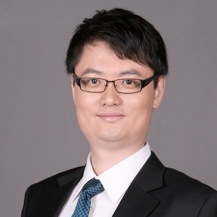Metal Additive Manufacturing and Its Post Processing Techniques
A special issue of Journal of Manufacturing and Materials Processing (ISSN 2504-4494).
Deadline for manuscript submissions: closed (30 September 2022) | Viewed by 51375
Special Issue Editors
Interests: hybrid and additive manufacturing; post-processing; ultraprecision machining
Special Issues, Collections and Topics in MDPI journals
Interests: additive manufacturing; bioprinting; metal/ceramic 3D printing; AM for biomedical applications
Special Issue Information
Additive manufacturing (AM) has been attracting tremendous attention in recent decades due to its unique advantages over conventional subtractive manufacturing processes in terms of customization and complex geometry and near-net-shape fabrication. To date, the application of AM technology has been extended to various fields of engineering, including automobile, aerospace, medical, and biomedical industries. Although the development of AM technology has been relatively successful at attaining sufficient mechanical properties, actual component adoption in the industry is still limited by the achievable surface finish and geometric accuracy. In this regard, post-processing is essential to remove support structures, tune microstructure and material properties, correct form errors, and improve surface finish. Post-processing methods commonly employ conventional subtractive manufacturing techniques that have been well established for shaping and finishing. It is desirable and challenging to integrate conventional manufacturing processes with the unique features of the additively manufactured components. The aim of this Special Issue is to provide the researchers and practitioners from academia and industries a forum for reviewing and discussing the state-of-the-art developments and future directions in the area of metal additive manufacturing and its hybrid post-processing technologies. For this Special Issue “Metal Additive Manufacturing and Its Post Processing Techniques” we invite papers that introduce the most innovative advances and enlighten on the scientific understanding of metal additive manufacturing technologies and post-processing methods through theoretical and/or experimental aspects of one or more of the following example topic areas:
- New processes and applications of metal additive manufacturing
- Material characterization and modelling for metal additive manufacturing
- Machine tools and processes for hybrid additive and subtractive manufacturing
- 3D printing for large-format components for industry applications
- AI technologies in metal additive manufacturing
- Non-conventional post-processing methods and applications
- Mechanical, abrasive, chemical, and electrochemical post-processing for AM
- Robot-assisted additive manufacturing and its post-processing
- Development of post-processing equipment/device for additive manufacturing
Dr. Hao Wang
Prof. Dr. Jerry Fuh
Guest Editors
Manuscript Submission Information
Manuscripts should be submitted online at www.mdpi.com by registering and logging in to this website. Once you are registered, click here to go to the submission form. Manuscripts can be submitted until the deadline. All submissions that pass pre-check are peer-reviewed. Accepted papers will be published continuously in the journal (as soon as accepted) and will be listed together on the special issue website. Research articles, review articles as well as short communications are invited. For planned papers, a title and short abstract (about 100 words) can be sent to the Editorial Office for announcement on this website.
Submitted manuscripts should not have been published previously, nor be under consideration for publication elsewhere (except conference proceedings papers). All manuscripts are thoroughly refereed through a single-blind peer-review process. A guide for authors and other relevant information for submission of manuscripts is available on the Instructions for Authors page. Journal of Manufacturing and Materials Processing is an international peer-reviewed open access semimonthly journal published by MDPI.
Please visit the Instructions for Authors page before submitting a manuscript. The Article Processing Charge (APC) for publication in this open access journal is 1800 CHF (Swiss Francs). Submitted papers should be well formatted and use good English. Authors may use MDPI's English editing service prior to publication or during author revisions.
Keywords
- additive manufacturing
- 3D printing
- post-processing
- hybrid manufacturing
- microstructure
- material characterization
- geometric accuracy
- modelling and simulation






